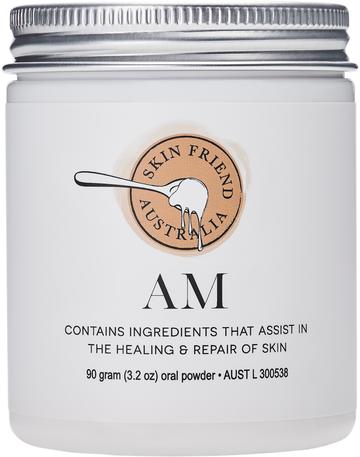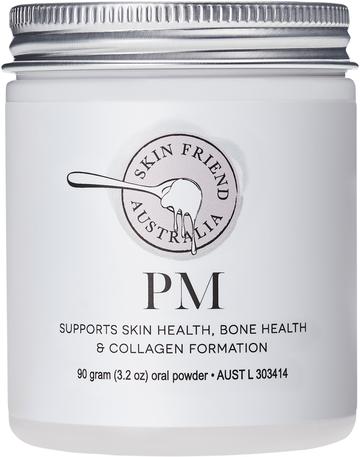
The recipe is also classed as low salicylate and low amine, so it's ideal for people with multiple chemical sensitivities, eczema, TSW, psoriasis and other types of skin inflammation that may require a low chemical (low salicylate) diet.
When Katie (who works with me at the Eczema Life Clinic) first made this recipe she made it vegan with a cashew nut base that was gluten-free. The custard was thickened with tapoica flour. Then she made it with oats and raw cashews for the base, and gelatine to thicken the custard. Both versions are absolutely lovely, so it was hard to pick a favourite.
In the end, I felt the thicker gelatine custard (with a little saffron to make it yellow) won and the oat version was more budget-friendly (and tasted like yummy coconut, even though it is coconut-free), so this is the version presented here. For the vegan/gluten-free version check the notes at the bottom of the page.

The benefits of saffron
Saffron is a great digestive aid and it's ideal for people with stomach issues. It may slightly flavour the custard, which I like, but if you don't like the flavour of saffron, simply leave it out.(ref.)
The 'free' custard
This custard is dairy free, egg free, refined sugar free, additive free and is made with a low salicylate oil. You can use other oils but ensure they do not flare up your skin condition. Avoid heavy flavoured oils such as coconut and olive as they will change (and dominate) the flavour and they are rich in salicylates so they are not suitable for people with chemical sensitivities or eczema. If you are sensitive to rice bran oil choose another low salicylate oil from the eczema diet or choose your favourite oil.
The health benefits of cashews
Cashews are high in many nutrients such as copper, magnesium, manganese, phosphorus and zinc. Copper is an important component in the development of bone, collagen and connective tissue (1). Manganese is also involved in collagen production and works as an antioxidant to protect your skin cells (2).
If you are sensitive to cashews, avoid using cashews!
The health benefits of tofu
Tofu is packed with skin-loving protein and contains a high amount of calcium, which aids in maintaining our acid alkaline balance, an essential component to healing eczema. Calcium, although it is alkaline, when it is incorporated into our skin, it helps it to maintain a slightly acidic skin barrier, called an acid mantle (3), which is vital for maintaining healthy skin. So calcium is one of your skin's best friends. If you are allergic to tofu, see our tofu-free suggestions in Notes (at the end).
Dairy Free Custard Tarts
- Preparation time 40 minutes; cooking time 35 minutes.
- Makes 8 to 10 tarts
- Salicylate level: low
- Amine level: gelatine may contain amines so if you are amine-sensitive use tapioca flour instead to ensure this recipe is low amine (see notes at the end)
Ingredients for the custard filling
- 1 cup rice milk (for variations see notes)
- ¾ cup plain silken tofu
- 2 or 3 tablespoons maple syrup (adjust sweetness to taste)
- 1 teaspoon of real vanilla essence (optional)
- 10g pure clear gelatine powder (or strip) (must be sulphite free so check the label!)
- 1/2 cup (125mL) boiling hot water
- Pinch of saffron, for yellow colour (I used about 6 strands, but this is optional)
Ingredients for the base
- 1.5 cup of raw cashews (must be raw as roasted cashews contain amines)
- 1.5 cup rolled oats (plain oatmeal)
- 3 tablespoons of real maple syrup (for variations see in notes)
- 4 tablespoons of rice bran oil
- 3-4 scoops (3 or 4 grams) calcium and magnesium powder (Skin Friend PM, optional)
- Pinch of quality sea salt
- 2 or 3 tablespoons tapioca flour (or spelt flour, or flour of choice)
Method
Preheat the oven to 160°C (320°F) and grease* 6 muffin tin holes with rice bran oil. *If you want to eat these immediately, use patty pan paper cups in the muffin holes so the base does not stick (the base needs to completely cool down before removing them after cooking to prevent sticking).
How to make the custard:
In a blender add the rice milk, tofu, maple syrup, real vanilla essence and saffron (if using), then blend together. Do not over blend, as you do not want heaps of bubbles when making the custard. Taste the milk mixture and adjust accordingly (if you prefer it sweeter), then set aside.
In a small bowl briskly whisk with a fork, the gelatine powder with 1/2 cup of boiling hot water until dissolved.
Place a cooking pot on medium heat and add the gelatine mixture to the empty pot, start stirring with a spatula. Now slowly add the milk mixture in to combine with the gelatine mixture while continuously stirring.
When the milk mixture is heated and the saffron is slightly yellowing the milk, remove from heat and leave to cool.
How to make the base:
Now grab your food processor (or high powered blender such as a Nutribullet) and blend the raw cashews until they resemble a meal, and place it into a large bowl.
Then blend the oats until it resembles a rough flour, then place it into the bowl (or you can do all of this in a food processor if using one). Then add the calcium/magnesium powder (if using) and mix with a spoon.
Then add the maple syrup and rice bran oil with a pinch of salt and mix together in the bowl. Add the tapioca flour until the mixture resembles a cookie dough like texture. It should stick together well and not be too crumbly. Add more flour if it is not holding together, or if it gets too dry just add more syrup or oil.
Photo: the mixture below held together nicely:

Take the mixture out of the food processor (or bowl) and press mixture into each hole to make a thin shell for the custard.

Remember to grease the pan holes with lots of oil or use patty pan (paper cups) to line the tin holes to prevent the tarts from sticking to the sides. I trimmed the edges at the top so it was easier to remove them after cooking (see image, below).

Bake in the oven for 10 minutes or until lightly coloured (up to 15 minutes). No need to blind bake... If the base rises in the centre, simply do what I did and press it back down gently when it has cooled slightly.
Keep the oven on as you will use it again shortly.
Leave the base to cool for about 5 minutes then whisk the custard one last time to ensure it is well mixed and pour into each shell, filling to just below the top.
Turn oven down to 150°C (300°F) and cook for about 10-15 minutes or until the base is nicely coloured, then remove from the oven.
If you have greased the pan holes with oil: It is very important to ensure you don’t try and take them out while they are still warm (as they will crumble). I placed my muffin tray on top of a tea towel and popped the tarts in the fridge to cool them down completely. When they are ready the custard should be set and base completely cooled.
Using a butter knife gently lift the tarts out and place them into a container or enjoy them straight away. Once they are out of the muffin tray you can reheat them on a flat tray if desired.
How to serve
These tarts are tasty all on their own, but would also pair nicely with a mug of carob tea, or served with caramelised banana or pear on top.
NOTES
- Tapioca: This recipe can be made vegan and amine-free with tapioca flour instead of gelatine. Mix 2-3 tablespoons of tapioca flour with 1/4 cup of cold rice milk and whisk with a fork until combined, then add another 1/4 cup of rice milk.
- If you can’t have tofu, ripe banana or white beans may be a nice alternative in the custard.
- To make this recipe gluten free, use raw cashews in place of the oats or try rice flour.
- Brown rice syrup can be used instead of maple syrup and any eczema friendly dairy free milk can be used, such as quality organic soy milk.
- Another flour may be trialled for the nut base instead of tapioca, we only tried with tapioca, but GF or spelt may also hold the mixture together nicely.
Products
At Eczema Life, we recommend nutritionist Karen Fischer's low food chemical program (The Eczema Detox) along with additive-free supplements for skin health and wellbeing. Click on the images to view more details:




